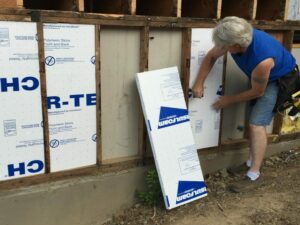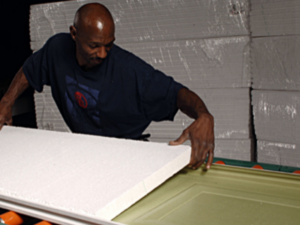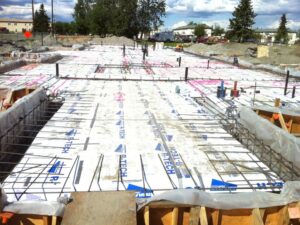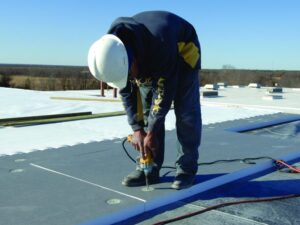From top to bottom: DIY insulation shores up homes’ energy drains
According to the North American Insulation Manufacturers Association (NAIMA), 90 percent of single-family homes in the U.S. are under-insulated. So, chances are your house could use some work.
While there are a variety of DIY insulation products to choose from to shore up your home, consider turning to expanded polystyrene (EPS). Employing EPS throughout your home, including the garage, attic and basement, can provide tangible energy and cost-saving benefits. In fact, the U.S. Department of Energy (DOE) estimates that when a home is properly insulated, energy bills can be reduced by 20 percent.
In addition to its premium performance capabilities, ultra-lightweight EPS is the easiest insulation to install, which makes it appealing whether you’re a new homeowner or an experienced do-it-yourselfer. Let’s take a closer look at how you can easily tackle garage, attic and basement DIY insulation projects with EPS:
Turn to a pre-configured garage door insulation kit for easy install
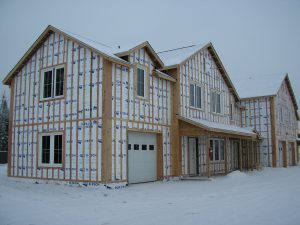
EPS CI on Lendlease home in Fairbanks Alaska
One of the most effective ways to decrease your home’s energy consumption is to insulate your garage door – typically the largest uninsulated surface in a home. To help shore up this energy drain and support an uncomplicated installation process, Insulfoam offers pre-configured garage door insulation kits that can be installed with common household tools.
This simple DIY insulation solution is available for purchase at The Home Depot, Menards and Lowe’s.
Look up to the attic to prevent energy waste
There’s no getting around it – properly insulating an unfinished attic is a must if you want to keep your heating and cooling costs in check. Employing EPS insulation across the attic floor, walls and ceiling will help prevent warm air from escaping the house in the winter months and stop warm air from making its way into the cool interior during the summer months. An easy insulation to install, EPS panels can be cut to accommodate your project’s needs using common household tools, such as a table saw or a straight edge and knife. A cap nail or screw will secure the panels into place.
If you’d rather leave the slicing and dicing to someone else, most home improvement stores offer pre-cut panels of EPS insulation in a range of sizes.
EPS insulation serves up performance in below-grade applications
In addition to its premium insulation capabilities, EPS’ closed-cell structure provides a high level of moisture resistance and breathability. It will not sustain mold and mildew growth – a welcomed benefit for your home’s neglected rooms, such as the basement. But don’t just take our word for it… a study conducted by the Energy Materials Testing Laboratories (EMTL) proved that EPS installed across a well-constructed building envelope does not absorb appreciable moisture, even under conditions characteristic of prolonged, cold, damp winters.
Embarking on a home DIY insulation project may feel intimidating at first glance, but the energy and cost-saving benefits will be well worth your efforts. Check out Insulfoam’s helpful installation videos to get started on the right foot.

